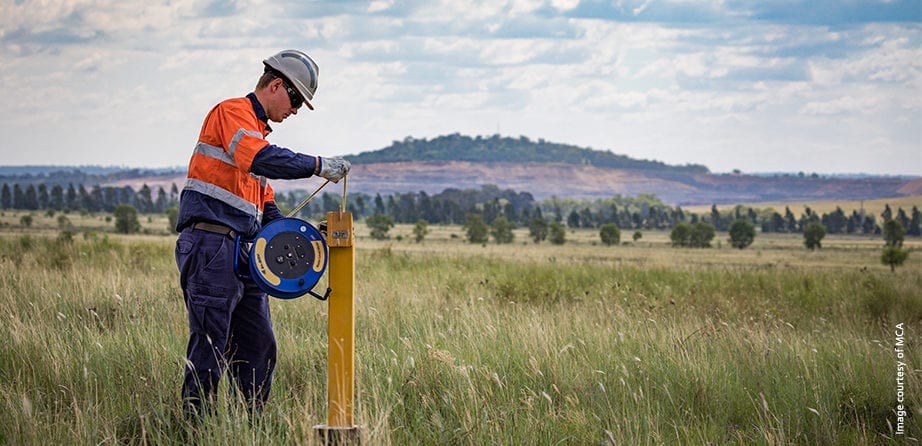Types of mining
Surface mining
- When is this used?
Surface mining is used when the coal seam is near the surface. It recovers a higher proportion of the coal deposit than underground mining as all coal seams are exploited – 90% or more of the coal can be recovered.
- How does it work?
The overburden of soil and rock is first broken up by explosives; it is then removed by draglines or by shovel and truck. Once the coal seam is exposed, it is drilled, fractured and systematically mined in strips. The coal is loaded on to large trucks or conveyors for transport to either the coal preparation plant or direct to where it will be used.
Large opencast mines can cover an area of many square kilometres and use very large pieces of equipment, such as draglines, power shovels, large trucks, bucket wheel excavators and conveyors.
- What is the impact on the land?
Coal mining is only a temporary use of land, so it is vital that mine rehabilitation takes place once operations have stopped. Detailed rehabilitation or reclamation plans are designed and approved, covering the period from the start of operations until well after mining has finished.
Underground mining
Underground mining currently accounts for a bigger share of world coal production than opencast. There are two main methods of underground mining: room-and-pillar and longwall mining.
Room and pillar
- When is this method used?
Room and pillar is usually used for flat lying deposits.
- How does it work?
In room-and-pillar mining, coal deposits are mined by cutting a network of ‘rooms’ into the coal seam and leaving behind ‘pillars’ of coal to support the roof of the mine. These pillars can be up to 40% of the total coal in the seam – although this coal can sometimes be recovered at a later stage.
Longwall
- When is this method used?
Longwall mining is used to mine a long wall of coal in a single slice.
- How does it work?
Longwall mining involves the full extraction of coal from a section of the seam, or ‘face’ using mechanical shearers. The coal ‘face’ can vary in length from 100-350m. Self-advancing, hydraulically-powered supports temporarily hold up the roof while coal is extracted. When coal has been extracted from the area, the roof is allowed to collapse. Over 75% of the coal in the deposit can be extracted from panels of coal that can extend 3km through the coal seam.
Coal mining & the environment
Reclamation Coal mining requires large areas of land to be temporarily disturbed. Steps are taken minimise impacts on all aspects of the environment. By carefully pre-planning projects, implementing pollution control measures, monitoring the effects of mining and rehabilitating mined areas, the coal industry minimises the impact of its activities on the neighbouring community, the immediate environment and on long-term land capability.
Minimising the impact

Mining safety
The coal industry takes the issue of safety very seriously; modern coal mines have rigorous safety procedures, health and safety standards and worker education and training.
Methane released from the coal seam and surrounding rock strata during mining can present a high risk of explosion at concentrations in air of 5-15%. Techniques have been developed to eliminate and/or dilute methane emissions both prior to and during mining and this has helped to significantly reduce methane related explosions in underground mines. Tackling methane emissions is also an important step in meeting the challenge of climate change, as its a potent greenhouse gas, and it can also act as a valuable source of energy.